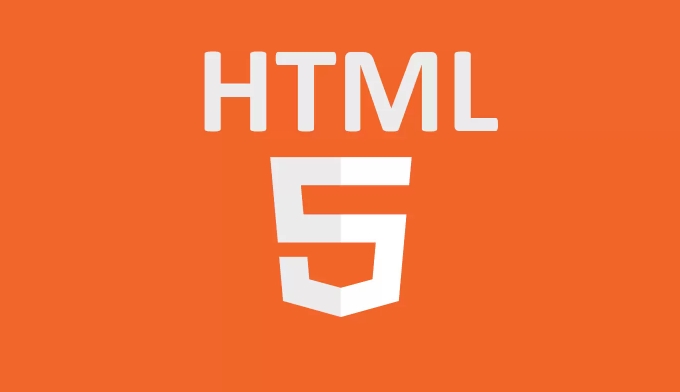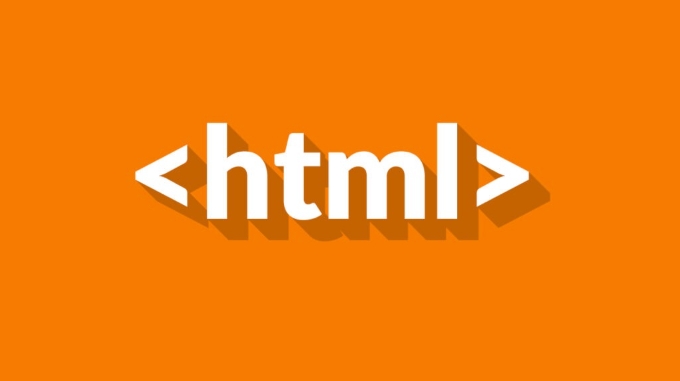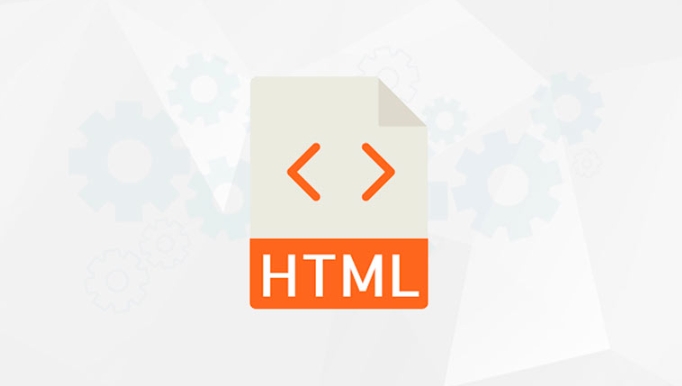The correct use of HTML data-properties must follow naming specifications, store string values, and avoid abuse. First, the attribute name must start with data-, and lowercase words are separated by hyphen, such as data-user-id; second, the value must be of string type, and complex data must be converted into JSON strings; finally, it is only used in scenarios that require JS processing, and does not replace semantic tags or CSS class names. In JavaScript, it can be accessed through the dataset object. The data-user-name in HTML corresponds to the camel in JS named userName. Common uses include storing data IDs, controlling behavior switches, passing configuration information, and cooperating with frameworks. Notes include: not storing sensitive information, avoiding large amounts of data affecting performance, manually updating the DOM after modification, and preventing naming conflicts. The rational use of data- attributes can improve code clarity and maintenance efficiency, but should not be overly relied on.

In web development, sometimes we need to store some additional information in HTML elements, such as the ID, status or configuration parameters corresponding to the button. HTML provides a standard way to achieve this: data-* attribute.

It's very simple, it's to add a property starting with data- on the label, followed by your customized name and value. The browser does not render these properties, but you can easily read or modify them through JavaScript, which is ideal for bridges for front-end and back-end data interactions.
How to use data-* attribute correctly
First of all, naming must be standardized. The attribute name must start with data- , and can be followed by any lowercase string, delimiting words with hyphen, for example: data-user-id or data-is-active .

<button data-user-id="12345" data-is-active="true">Click me</button>
Secondly, the value can only be of string type. If you need to save an array or object, you have to convert it to a JSON string first:
<div data-info='{"name": "Alice", "age": 28}'></div>Finally, don't abuse it. Although it can put any data, it should not be used instead of semantic HTML tags or CSS class names, only for those scenarios that require JS processing.

How to access data-* attributes in JavaScript
The most recommended way is to use dataset API. Each element with data-* attribute has a dataset object that contains all custom data.
For example, the following code:
<span data-role="admin" data-user-name="JohnDoe"></span>
Data can be obtained by:
const element = document.querySelector('span'); console.log(element.dataset.role); // Output: admin console.log(element.dataset.userName); // Output: JohnDoe
Note the naming conversion rules: data-user-name in HTML becomes userName in JS, that is, the hyphen turns into camel.
If you want to set or update a value, you can also directly assign the value:
element.dataset.userName = 'NewName';
Common uses and precautions
Common uses include:
- Store the data IDs associated with elements (such as user ID, article ID)
- Switch flags that control front-end behavior (such as
data-loading="true") - Pass a small amount of configuration information to JS when page initialization
- Work with front-end framework for data binding (such as Vue or React)
Things to note:
- Not suitable for releasing sensitive information because HTML is publicly readable
- Try to avoid large amounts of data, which will affect page performance
- The DOM will not be automatically synchronized after modification unless the properties are updated manually
- If multiple components rely on the same
data-*attribute, pay attention to naming conflicts
Basically that's it. data-* attribute is a simple and practical gadget. If used well, it can improve code clarity and maintenance efficiency, but don't rely too much on it.
The above is the detailed content of HTML `data-*` Attributes for Custom Data. For more information, please follow other related articles on the PHP Chinese website!

Hot AI Tools

Undress AI Tool
Undress images for free

Undresser.AI Undress
AI-powered app for creating realistic nude photos

AI Clothes Remover
Online AI tool for removing clothes from photos.

Clothoff.io
AI clothes remover

Video Face Swap
Swap faces in any video effortlessly with our completely free AI face swap tool!

Hot Article

Hot Tools

Notepad++7.3.1
Easy-to-use and free code editor

SublimeText3 Chinese version
Chinese version, very easy to use

Zend Studio 13.0.1
Powerful PHP integrated development environment

Dreamweaver CS6
Visual web development tools

SublimeText3 Mac version
God-level code editing software (SublimeText3)
 Applying Semantic Structure with article, section, and aside in HTML
Jul 05, 2025 am 02:03 AM
Applying Semantic Structure with article, section, and aside in HTML
Jul 05, 2025 am 02:03 AM
The rational use of semantic tags in HTML can improve page structure clarity, accessibility and SEO effects. 1. Used for independent content blocks, such as blog posts or comments, it must be self-contained; 2. Used for classification related content, usually including titles, and is suitable for different modules of the page; 3. Used for auxiliary information related to the main content but not core, such as sidebar recommendations or author profiles. In actual development, labels should be combined and other, avoid excessive nesting, keep the structure simple, and verify the rationality of the structure through developer tools.
 Implementing Clickable Buttons Using the HTML button Element
Jul 07, 2025 am 02:31 AM
Implementing Clickable Buttons Using the HTML button Element
Jul 07, 2025 am 02:31 AM
To use HTML button elements to achieve clickable buttons, you must first master its basic usage and common precautions. 1. Create buttons with tags and define behaviors through type attributes (such as button, submit, reset), which is submitted by default; 2. Add interactive functions through JavaScript, which can be written inline or bind event listeners through ID to improve maintenance; 3. Use CSS to customize styles, including background color, border, rounded corners and hover/active status effects to enhance user experience; 4. Pay attention to common problems: make sure that the disabled attribute is not enabled, JS events are correctly bound, layout occlusion, and use the help of developer tools to troubleshoot exceptions. Master this
 Configuring Document Metadata Within the HTML head Element
Jul 09, 2025 am 02:30 AM
Configuring Document Metadata Within the HTML head Element
Jul 09, 2025 am 02:30 AM
Metadata in HTMLhead is crucial for SEO, social sharing, and browser behavior. 1. Set the page title and description, use and keep it concise and unique; 2. Add OpenGraph and Twitter card information to optimize social sharing effects, pay attention to the image size and use debugging tools to test; 3. Define the character set and viewport settings to ensure multi-language support is adapted to the mobile terminal; 4. Optional tags such as author copyright, robots control and canonical prevent duplicate content should also be configured reasonably.
 Best HTML tutorial for beginners in 2025
Jul 08, 2025 am 12:25 AM
Best HTML tutorial for beginners in 2025
Jul 08, 2025 am 12:25 AM
TolearnHTMLin2025,chooseatutorialthatbalanceshands-onpracticewithmodernstandardsandintegratesCSSandJavaScriptbasics.1.Prioritizehands-onlearningwithstep-by-stepprojectslikebuildingapersonalprofileorbloglayout.2.EnsureitcoversmodernHTMLelementssuchas,
 HTML for email templates tutorial
Jul 10, 2025 pm 02:01 PM
HTML for email templates tutorial
Jul 10, 2025 pm 02:01 PM
How to make HTML mail templates with good compatibility? First, you need to build a structure with tables to avoid using div flex or grid layout; secondly, all styles must be inlined and cannot rely on external CSS; then the picture should be added with alt description and use a public URL, and the buttons should be simulated with a table or td with background color; finally, you must test and adjust the details on multiple clients.
 How to associate captions with images or media using the html figure and figcaption elements?
Jul 07, 2025 am 02:30 AM
How to associate captions with images or media using the html figure and figcaption elements?
Jul 07, 2025 am 02:30 AM
Using HTML sums allows for intuitive and semantic clarity to add caption text to images or media. 1. Used to wrap independent media content, such as pictures, videos or code blocks; 2. It is placed as its explanatory text, and can be located above or below the media; 3. They not only improve the clarity of the page structure, but also enhance accessibility and SEO effect; 4. When using it, you should pay attention to avoid abuse, and apply to content that needs to be emphasized and accompanied by description, rather than ordinary decorative pictures; 5. The alt attribute that cannot be ignored, which is different from figcaption; 6. The figcaption is flexible and can be placed at the top or bottom of the figure as needed. Using these two tags correctly helps to build semantic and easy to understand web content.
 What are the most commonly used global attributes in html?
Jul 10, 2025 am 10:58 AM
What are the most commonly used global attributes in html?
Jul 10, 2025 am 10:58 AM
class, id, style, data-, and title are the most commonly used global attributes in HTML. class is used to specify one or more class names to facilitate style setting and JavaScript operations; id provides unique identifiers for elements, suitable for anchor jumps and JavaScript control; style allows for inline styles to be added, suitable for temporary debugging but not recommended for large-scale use; data-properties are used to store custom data, which is convenient for front-end and back-end interaction; title is used to add mouseover prompts, but its style and behavior are limited by the browser. Reasonable selection of these attributes can improve development efficiency and user experience.
 How to handle forms submission in HTML without a server?
Jul 09, 2025 am 01:14 AM
How to handle forms submission in HTML without a server?
Jul 09, 2025 am 01:14 AM
When there is no backend server, HTML form submission can still be processed through front-end technology or third-party services. Specific methods include: 1. Use JavaScript to intercept form submissions to achieve input verification and user feedback, but the data will not be persisted; 2. Use third-party serverless form services such as Formspree to collect data and provide email notification and redirection functions; 3. Use localStorage to store temporary client data, which is suitable for saving user preferences or managing single-page application status, but is not suitable for long-term storage of sensitive information.






